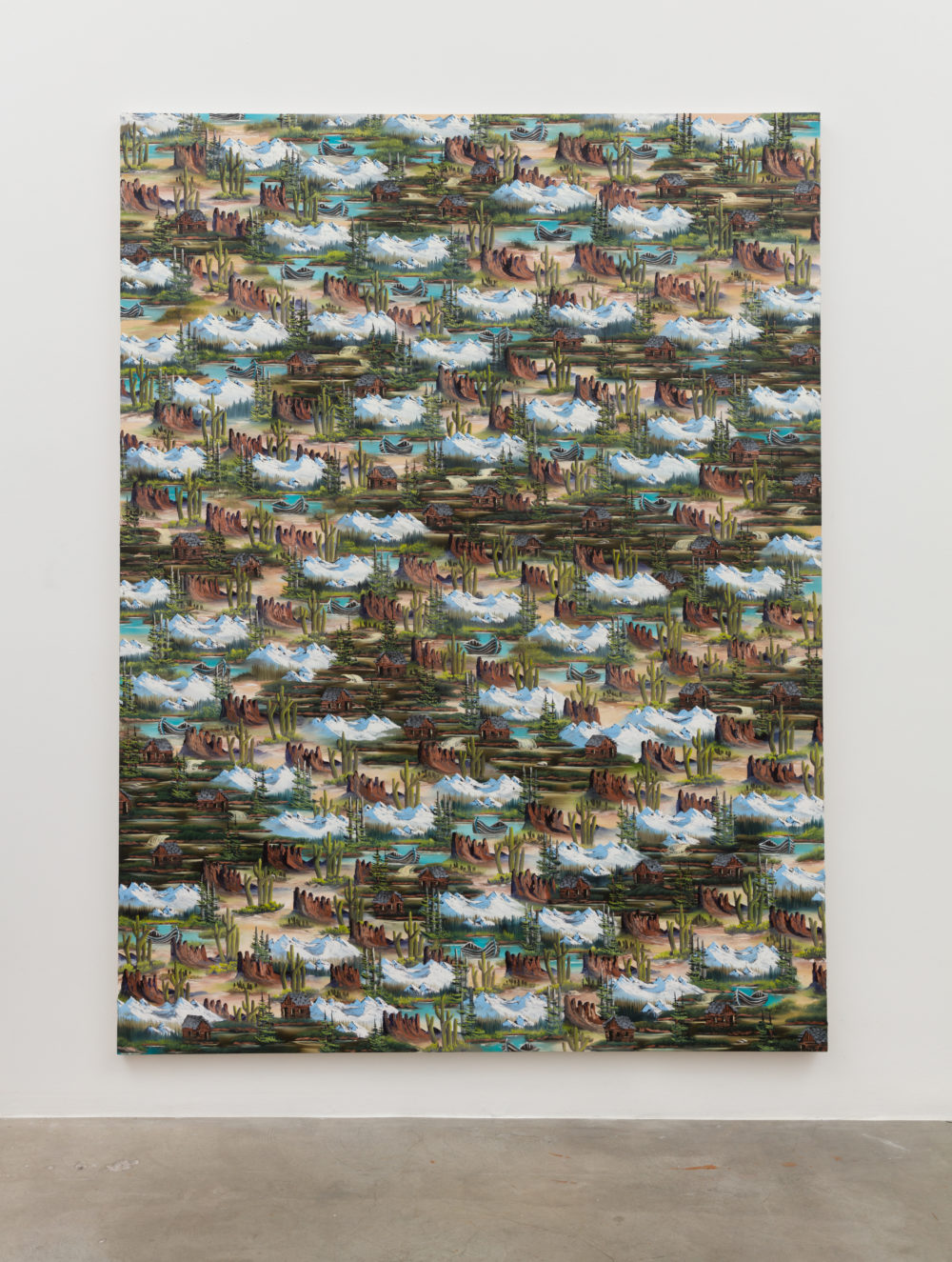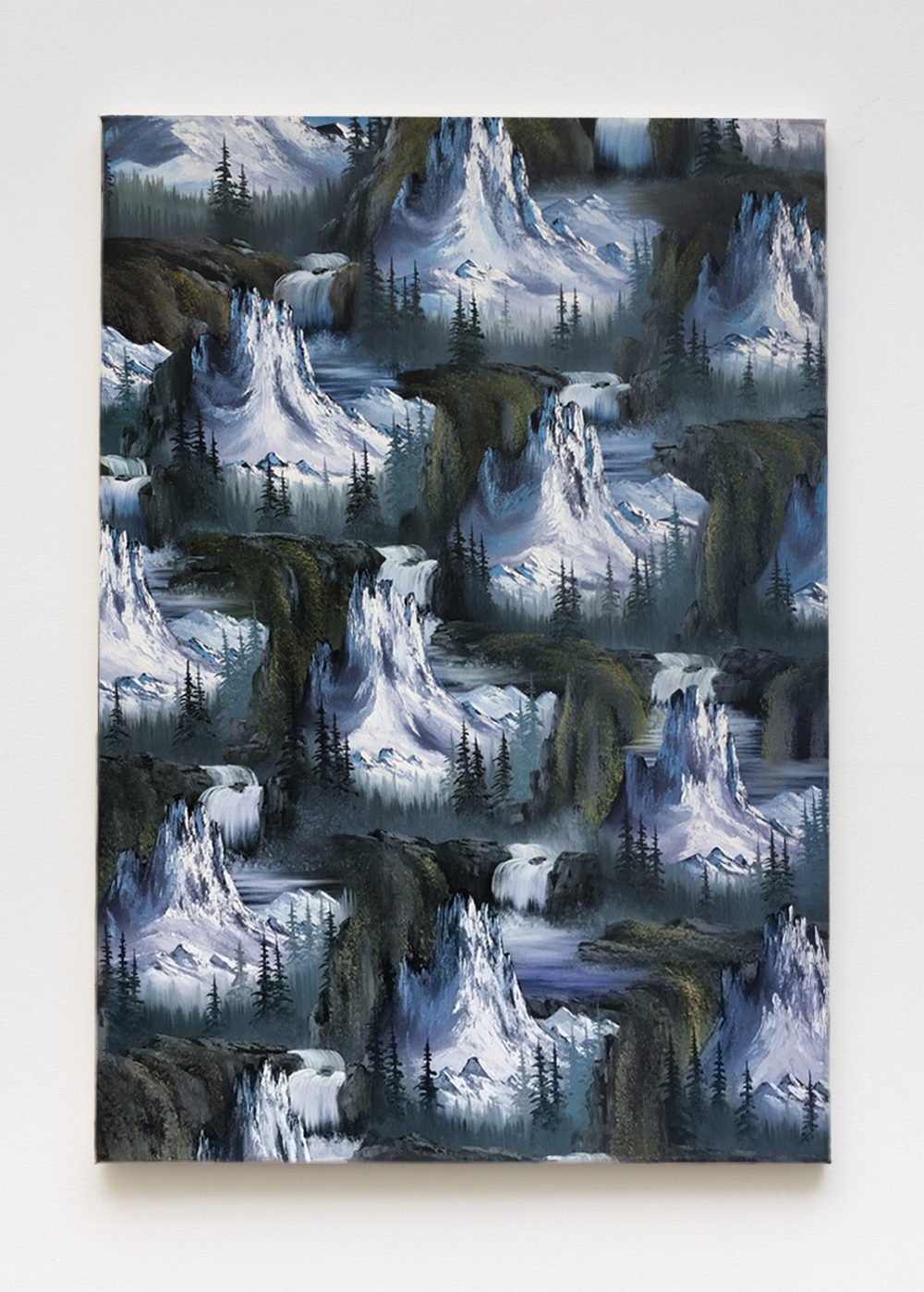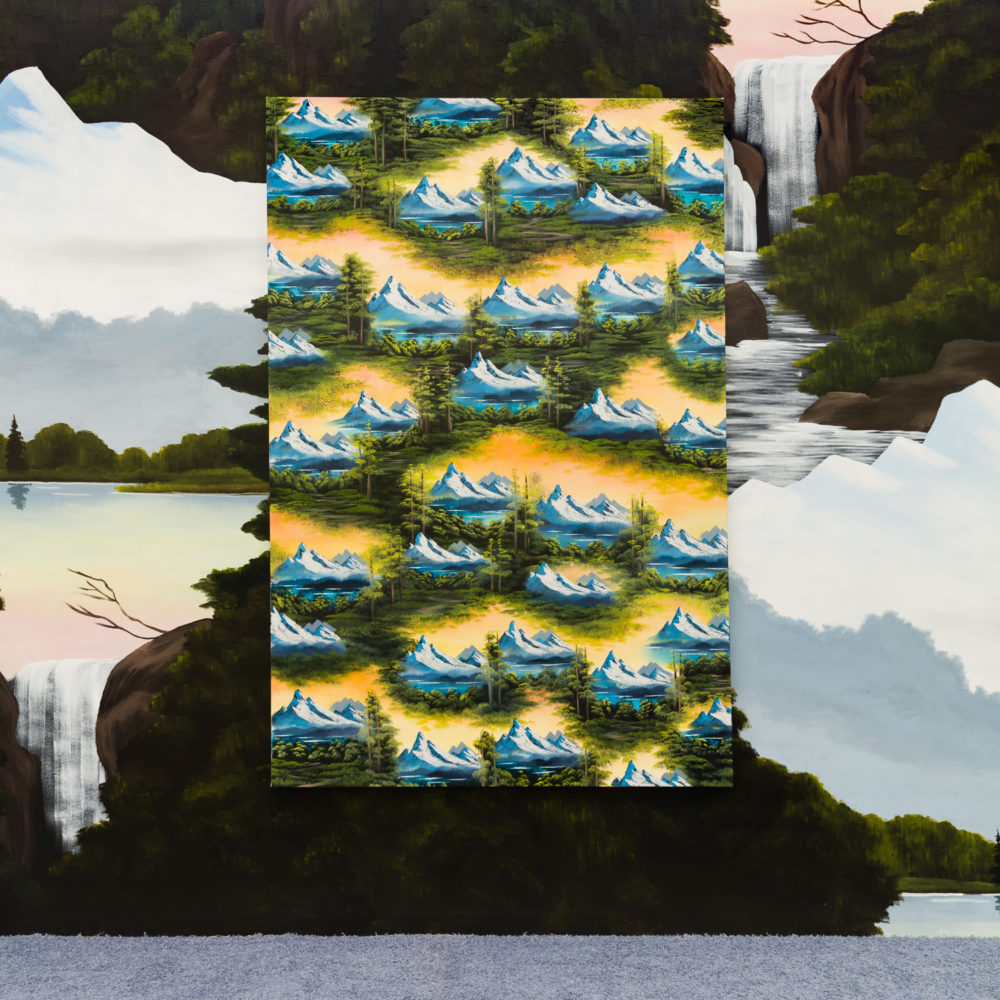Neil Raitt’s canvases employ repetition and landscape to create a dialogue between artistic modes of the past and present. The repeated motifs Raitt paints blur the boundaries between realism and abstraction, creating something at once recognizable and ambiguous. The British-born Raitt is represented by Anat Ebgi in LA, Valetin in Paris, and lives and works in London, England.
Your work engages the natural world in a very manufactured way. Can you speak on this juxtaposition?
The mountains, trees, and other natural motifs within my work come from quite a manufactured world. They are very economical in their execution and operate as a kind of stand-in for their real-world representations. I’m attracted to their simplicity and the way that a drag of paint can represent an expanse of space. This step-by-step approach to painting embodies a kind of artificiality, but somehow repeating these steps over and over again has the opposite effect, highlighting their idiosyncrasies.
When did you become interested in working in repetition?
I was painting along to Bob Ross’ TV show ‘The Joy of Painting’ on and off throughout art school. It was towards the end of my painting course at The Royal College of Art that the ‘how to’ episodes on painting landscapes came to the forefront of my practice in the form of repetition. I started to collect the instructional books that would guide you through the step-by-step process of painting a mid-west mountain scene. Throughout the 31 seasons of The Joy of Painting, Bob made over 400 paintings on camera. I read that he would make four versions for each episode, one that he would use as a reference out of camera shot during the taping of the episode that he would paint along to himself. Isolating each step of the process, it has developed into a form of mark making where each mountain peak operates more like a brush stroke, rather than a landscape in the traditional sense.
Do you always use oil paint? What about this material interests you?
The paintings are predominantly made using oil paint, although there is sometimes an acrylic underpainting. As my practice grows it has come to embody more installation-based elements that involve murals painted in acrylic and pieces such as furniture upholstered in printed fabric.
Oil paint as a medium is such a slippery, muddy material. It has quite a slow drying time, so you can start with an idea and work it up on the canvas over a period of time, pushing and pulling it around, until it grows into something you are happy with.
Due to the nature of oil paint, your works must take quite some time to complete. How does time figure into your creating process?
I try not to let time become a factor in the creative process as it can sometimes serve to limit the freedom that I think is important when you’re making a painting or any piece of art. For me, painting can be very meditative and finding yourself lost within it is one of the best parts of being an artist for me. There is an immediacy that is associated with this style of painting (wet-on-wet), so I wouldn’t say it was a particularly slow style of painting.
Who are some artists, living or dead, who inspire your work?
Francis Picabia, Tomma Abts, Sol LeWitt, Alfred Wallis, Marc Camille Chaimowicz, Rosemarie Trockel, Henri Matisse, Frank Lloyd Wright, Ansel Krut, Ann Craven, Fischli/Weiss, Caspar David Friedrich.
The colors in your work are very catching and put together feel very unique. How do you decide which colors will come into play on a canvas?
The works go through phases of colour, spanning from earthy, realistic tones to the more saturated, artificial side of the spectrum. It’s a very intuitive process, but I’m always trying to find a kind of threshold where certain rules of colour theory start to break down.
What experience do you want viewers to walk away with after viewing a Neil Raitt work?
I don’t really want viewers to take away a particular experience, just whatever they get from it is always interesting for me.
What’s next for you? What has you excited right now?
I’m excited to travel to Lisbon next week where I will be in a group show at Galeria Pedro Cera called ‘Mythologies of a Sublime’. The exhibition brings together works by a group of artists whose practice directly or indirectly, engages with the mythologies that are associated with Los Angeles, through a conceptualization of the interior, vivid patterns and isolated fictions. I will be showing an installation-based piece alongside seven great artists; Marius Bercea, Hannah Greely, Alex Hubbard, William Leavitt, Jon Pestoni, Claire Tabouret and Sean Townley. The exhibition opens on 13th September and runs until 31st October 2018.



